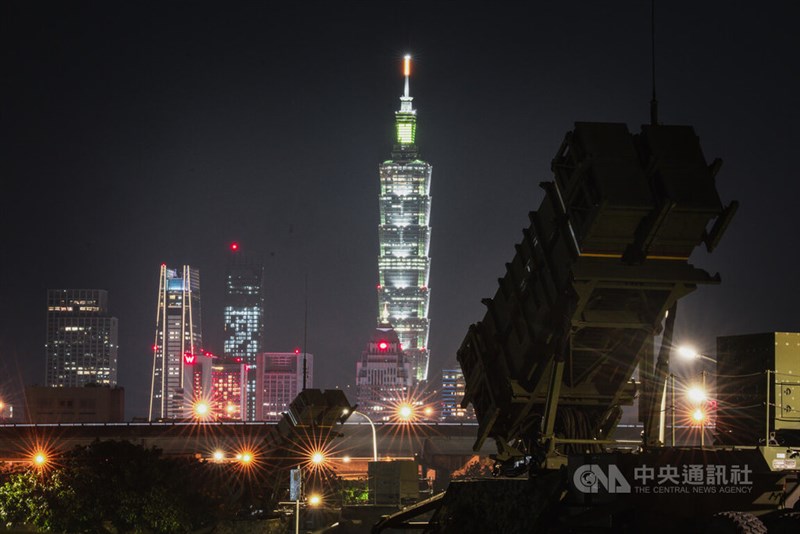
Taipei, July 20 (CNA) The recent publicity surrounding the deployment of Patriot PAC-2 and PAC-3 mobile missile launchers at a riverside park in Taipei raised the profile of Taiwan's armed forces but may create a predicament in securing operational security (OPSEC), an anonymous military source told CNA.
During the 10-day Han Kuang drills from July 9 to 18, the military's public presence was significant, with Patriot PAC-2 and PAC-3 mobile missile launchers especially in the spotlight across social media.
Unlike in past drills, when military personnel would stop members of the public from photographing military equipment, soldiers this year only intervened when someone crossed the security line.
The military source said that although images of military weaponry are believed to boost public confidence in the military's combat readiness, they may conflict with OPSEC principles.
"This is a predicament," the source said, noting that the tactical deployment positions of missile launch vehicles often require on-site surveys to assess their advantages, disadvantages and mobility.
Although alternative locations are available if one is exposed, considering Taiwan's limited land area and dense population, having all deployment sites compromised could indeed affect wartime operations, the source said.
Shu Hsiao-huang (舒孝煌), an associate research fellow at Taiwan's state-run Institute for National Defense and Security Research, said the Air Force's eased restrictions on taking photos may be intended to demonstrate "all-out defense" in Taiwan.
"The armed forces are fighting high-tech wars, not the kind of war our ancestors fought," Shu said, suggesting military recruiters seize such opportunities and stress such a message.
Meanwhile. Su Tzu-yun (蘇紫雲), a research fellow at the same institute as Shu, said soldiers' more relaxed attitude toward people taking photos of weaponry demonstrated a transformation in military culture and increased openness.
The armed forces' live broadcast of FIM-92 Stinger shoulder-fired missiles at public venues, maneouvers involving a platoon of M1A2T tanks Taiwan purchased from the United States, as well as the debut of the Mobility Artillery Rocket Systems (HIMARS) during the Han Kuang drills, reflected the Ministry of National Defense's efforts to establish dialogue with society about its strategy, Su said.
- Politics
Army to form drone groups for each theater by next July: chief of staff
10/23/2025 08:18 PM - Business
Taipei home unit sells for reported record NT$4 million per ping
10/23/2025 07:23 PM - Society
No immediate threat from Swallow Grotto barrier lake, red alert lifted
10/23/2025 07:08 PM - Society
African swine fever control measures to last 15 days: MOA
10/23/2025 06:53 PM - Business
Central bank to ensure forex stability amid U.S. talks: Governor
10/23/2025 06:03 PM